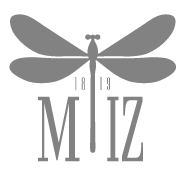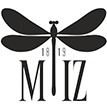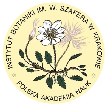
- 1. Blood ammonia level standard in normal patients estimated by Jouany- Reynier method was: a) on normal diet 47’7 y%, b) on non-protein diet — 40’2 y%. Average standard upper limit — 80 y%. 2. Average blood ammonia level in 10 patients with cirrhosis of the liver of hemorrhage from esophageal varices was 94 y%. 3. Average blood NH3 level in patients with hemorrhage from a gastric or duodenal ulcer or due to cancer of the stomach or hemorrhagic gastritis was 515 y%. That level was within limits considered normal. 4. According to the results of our investigations, in general blood NH3 leve, in patients with hemorrhage from esophageal varices is increased; howeverl it cannot be taken as an absolute proof either of cirrhosis of liver or portal circulation disturbances.
- 1. Morphological lesions of the lymph vessels in chronic lymph stasis consisin the formation of new lymphatic capillaries, as well as in the varicoid dilatation of the main vessels.2. In spite of long-lasting lymph stasis lymph pressure is the same in thelymphedematous and healthy leg.3. Protein level is the same in lymph derived from the lymphedematous andhealthy leg.
- 21-year-old student of nursing school with chronic uremia, due to chronic glomerulonephritis was submitted to the transplantation of kidney, taken from a cadaver. One month before the transplantation, bilateral nephrectomy with simultaneous splenectomy was performed. The total ischemic period lasted for 57 minutes only. The rejection crisis occurred on the 39. day after transplantation and was suc- cess-fully controlled with increased dose of steroid hormones. The function of the transplanted kidney is good. The patient gained 18 kg of weight, is normotensive, without anemia. There are still some symptoms of secondary hyperparathyreoidism, due to the long lasting renal disease
- The 30 min cerebral ischemia was induced by bilateral occlusion of the common carotid artery in Mongolian gerbils under intra-peritoneal pentobarbital anesthesia. The short duration unila-teral carotid occlusion proceded the main ischemic insult to check anomalies of the Willis circle. Cortical bioelectric ac-tivity, arterial blood pressure, respiratory and cardiac fun-ction were continuously recorded during the ischemic period and recovery up to 9 hrs. Postmortem intra-cardiac dye infusion was performed to demonstrate communications between the vertebro-basilar and carotid circulations. In the other group, animals were sacrificed every hour after ischemia and prepared for the light microscopic observations. During ischemia blood pressure increased and electrocerebral silence as recorded. Release of the carotid arteries produced drop of blood pressure below the control values. Recovery of cerebral bioelectric activity took place between 50 min and 3 hrs after ischemia reaching in some cases the control recording. Afterwards the slow decline of electrocerebral activity appeared. The morphological altera-tions were observed already 1 h after ischemia. During recovery of cerebral bioelectric activity with tendency toward normali-zation, considerable progression of structural alterations exi-sted with dominance of cytotoxic edema. They suppressed the ce-rebral function leading to the brain death..
- 34 patients with aneurysm of peripheral arteries were treated in the 1st Clinic of Surgery of the Medical Academy in Warsaw, in the years 1959—1965. The authors reported on the results of treatment and they made known their views on surgical management
- 45 cases of leukemia were examined.I.It was stated, that morphological changes Within the (central nervous system are much more common than one could expecte on the basis of the clinical neurological symptomatology. The majority of cases has not presented any neurological symptoms or signes.
- The 5 perfusions of isolated homogenic pig liver were carried out using elaborated method of its storage. The activity of asparagine and alanine aminotransferases, alkaline phosphatase, lactate and glutamate dehydrogenases and bilirubin concentration in preservatic fluid and in the blood of acceptor pig were determined. The sow increase of GOT and LDH activities in preservatic fluid were demonstrated. In the blood of acceptcr-pig the activities of all of the enzymes tested were elevated.
- A 1-month old patient with suspected neuro-muscular disease was examined. A biopsy ofquadriceps sinister was performed.Electronmicroscopy analysis revealed no significant ultrastructural changes in some muscle fibers.They were characterized by normal myofibrils and sub-membranous located cell nuclei. Withinsome mitochondria, damage of mitochondrial cristae was observed.Single fibers ofsmall diameter and centrally located nuclei, what suggest their incomplete maturitywere visible. Widening of the sarcoplasmic grid was seen.In some fibres, the phenomenon of external and internal fission of the nuclear membrane andformation of “vacuoles” was observed.
- A 10-year-old patiemt with suspected mitochondrial myopathy was examined. Altered, swollen mitochondria with inclusion bodies were seen. They were also characterized by disrupted or lack of cristae. Microscopic image of the biopsy shows features of mitochondrial myopathy.
- A 10-year-old patient was examined. A biopsy of quadriceps sinister was performed.Electronmicroscopy analysis revealed ultrastructurally unchanged muscle fibers characterized bypreserved sarcomeres structure. Single fat droplets were visible and a few swollen mitochondria wereobserved, but it was probably within the normal range.
- A 10-year-old patient with suspected myopathy was examined. Left quadriceps biopsy was performed. Electronmicroscopy analysis reveald mostly preserved myofibrils structure and unchanged sarcomeres but some parts of the specimen abnormal sarcomere pattern was observed. Unchanged, located submembranously nuclei were seen and mitochondria characterized by bright matrix and devoid of mitochondrial cristae were observed. Characteristic inclusions were present in the muscle fibers.
- A 11-year-old patient was examined. A biopsy of quadriceps femoris was performed.Electronmicroscopy analysis of the biopsy revealed changes in sarcomeres pattern as well as disorganization and atrophy of myofibrils. Osmophilic "plaques" of varying size and shape were abundant. The microscopic image of the biopsy suggests primary muscular damage.
- A 11-year-old patient was examined. Biceps biopsy was performed. Electronmicroscopy analysis revealed ultrastructurally unchanged myofibres and normal structure of mitochondria (Fig. 1.) Large amount of collagen was observed around the capillary vessels (Fig. 2,3), at Fig.4 also a lymphocyte was present. Fat droplets were visible in the capillaries, and again, abundant connective tissue around the vessels was seen (Fig. 5,6).
- A 11-year-old patient with polyneuropathy and changes in the skin was examined. A left biceps biopsy was performed.Normal architecture of muscle fibers,preserved sarcomere pattern and morphologically unchanged nucleil ocated under the sarcolemma were observed in some part of the biopsy,but at the some time focal structural changes and atrophy of myofibrils were seen.The individual muscle fibers were separated by a small amount of connective tissue.In other muscle cells ,sarcomeres pattern was disturbed and myofibrils were scattered.Abnormal mitochondria characterized by light matrix and devoid of mitochondrial cristae as well asmyelinlike bodies were present.
- A 12-year-old patient was examined. A biopsy of quadriceps sinister was performed. An increased amount of fat droplets was observed. Some mitochondria show sings of edema and were characterized by lack of mitochondrial aristae. Biochemical analysis of the biopsy in recommended.
- A 12-year-old patient was examined towards progressive myopathy. A biopsy of quadriceps sinisterwas performed.Most of the myofibers did not reveal significant changes in their ultrastructure. In somefibers, blurring of the Z-line coloration within the sarcomeres was observed. Widenedsarcoplasmic reticulum channels were seen. Electronmicroscopy analysis indicatesprimary muscular damage.
- A 12-year-old patient with suspected metabolic myopathy was examined. A biopsy of quadricepswas performed.Electron microscopy revealed normal preserved architecture of muscle fibers, but numerous fatdroplets were observed. Significant changes were seen within some mitochondria - they were characterized by light mitochondrial matrix and were partially or even totally devoid ofmitochondrial cristae.
- A 13-year-old patient suspected limb-gridle dystrophy was examined. A biopsy of biceps sinister was performed. Electron microscopy revealed numerous immune cells (eosinophils) in endomysium sinphilic leucocytes were also present close to and inside degenereating muscle cells, what suggests thier role in this process. In some muscle cells myelin-like bodies were observed.
- A 13-year-old patient with suspected congenital myopathy was examined. A biopsy quadriceps sinister was performed. Electronmicroscopy analysis revealed most of the muscle fibers of the correct diameter (Fig.1). In such fibers , centrally located myocyte nuclei present (Fig.2,3,4). In some myocytes disorganization of the myofibrils of the contractile apparatus observed (fig.5,6,7,8,9,10,11). The mitochondria in the ultrastructurally altrered myocytes were damaged, characterized by light mitochondrial matrix and lack of mitochondrial cristae (Figes 12,13,14).
- A 14-year-old patient with suspected scoliosis myopathy was examined. A biopsy of quadriceps sinister was performed. Electronmicroscopy analysis of the biopsy revealed preserved sarcomers structure. Significant changes were observed within some mitochondria. They were characterized by light mitochondrial matrix, were swollen and partially or totally devoid of mitochondrial cristae. Some fat droplets were seen. Focally, abundant glycogen deposits were observed.
- A 15-year-old patient with congenital familial myopathy was examined.A biopsy of left deltoid muscle was performed.Electronmicroscopy analysis revealed some myofibres with preserved sarcomers and myofibrils structure and submembranous lylocated nuclei.Many altered nuclei were seen.Distance between the inner and outer nuclear membranes was widened and some breaks in the nuclear envelope were observed.Changed sarcomere pattern and inclusions of various sizes and shapes were visible in myocytes.In some muscle cells myelin-like bodies were observed.
- A 15-year-old patient with suspected myopathy/dystrophy was examined. A biopsy of quadriceps sinister was performed.Electronmicroscopy analysis did not reveal ultrastructural changes in the structure of the muscle fibers and sarcomers architecture (Fig. 1.) We observed swollen mitochondria, characterized by light mitochondrial matrix and partly or even totally devoid of mitochondrial cristae. Myelin-like bodies were seen in some mitochondria.In this patient mitochondrial enzymatic disorders were suspected.
- A 16-year-old patient with features of cardiomyopthy and myopathy was examined.Electron microscopy analysis revealed the presence of amorphous inclusions.Numerous lysosomes and autophagal vacuoles were observed in the cytoplasm of myocytes.Microscopical image of the biopsy showed the features of the primary muscularinflammation.Immunohistochemical examination revealed the presence of inclusions in the muscle cellscytoplasm. These inclusions stained with antybodies against desmin, alpha-actinin,tropomyosin, dystrophin, and the tau protein
- A 17-year-old patient with suspicion of myotonic dystrophy was examined characterized by presrved miofibrills and unchanged sarcomeres pattern. No changes within mitochondria were observed.
- A 18-year-old patient with suspected mitochondrial myopathy was examined. A biopsy a quadriceps sinister was pefomed. No significant changes in the architecture of muscle fibers were observed, the structure of the sarcomeres was preserved. Unchanged mitochondria , with no sings of edema were seen. Quuite numerous fat droplets were observed.
- A 19 year-old patient was examined. A biopsy of cardiac muscle was performed. Electronmicroscopyanalysis showed nuclear and sarcoplasmic abnormalities. The loss of myofibrils and their narrowingin some cardiomyocytes were seen (Fig. 1-2). Within mitochondria, vacuole-like structures werepresent (Figures 3-6). Nuclei characterized by nuclear folding and disruption were observed in thecells. In the nucleus cytoplasmic elements were present (Fig. 7-10).
- A 19-year-old patient with suspected myopathy was examined. A biopsy of quadriceps sinister wasperformed.No significant ultrastructural changes in muscle fibers were observed. Some mitochondria werecharacterized by loss of mitochondrial cristae. Electronmicroscopy analysis revealedalso the presence of fat droplets within the muscle fibers.A defect of mitochondrial enzymes was suspected. Biochemical examination of carnitinepalmitoyltransferase was performed and it showed enzyme deficiency. The result of carnitinepalmitoyltransferase level was 4,38 nM/mgB/min. (normal range 6,5-18 nM/mgB/min.).
- A 19-year-old patient with suspected myopathy was examined. A biopsy of quadriceps sinister wasperformed.Ultrastructurally unchanged myofibrils with preserved sarcomers structure were observed. Normal,located under sarcolemma nuclei were present. Fat droplets were seen..
- A 2-month-old patient e]with feautres of congenital myopathy was situated myofibrils were colosely demarcated from the remaining part of muscle fibers with well-preserved architecture. Disorganized myofbrils forming the " cap" frequntly possessed the components I-Z-I bands (Fig. 1,2,3). Small round muscle fibers with centrally located nuclei and " cap" like structures. (Fig.4,5).
- A 2-year-old patient with suspected congenital myopathy was examined. A biopsy of quadriceps sinister was performed. Myofibres of standard and smaller than normal diameter were observed in the analyzed specimen. Electron microscopy revealed unchanged structure of myofibrils, sarcomeres and normal sub mem-branous nuclei.
- A 20-year-old patient with suspected Danon disease was examined.A biopsy of quadriceps sinister was performed.The vast majority of the muscle fibers did not reval ultrastructural changes. Muscule fibers were characterized by correct myofibril arrangement and the preserved sarcomers structure , some fal droplets were observed. Few mitochondria partially devoid of mitochondrial cristae were seen.
- A 20-year-old patient with suspected Danon's syndrome was examined. A biopsy of quadriceps dexter performed. Muscule fibers of diameter within a normal range, with preserved myofibril architecture.In some (5-8%) of muscule fibers autophagic vacuoles containing various cytoplasmatic debris ,electron dense material and glycogen were seen.
- A 20-year-old patient with suspected Danone disease was examined. A biopsy of quadriceps dexterwas performed.Electronmicroscopy analysis revealed unchanged structure of muscle fibers with preservedmyofibrils. Numerous small autophagous vacuoles and some glycogen deposits were observed.Ultrastructural image suggests Danone disease or glycogenosis type 2.
- A 20-year-old patient with suspected Danone disease was examined. A biopsy of quadriceps dexterwas performed.Numerous small vacuoles of autophagic nature as indicated by the presence of electron-dense granularmaterials and variable cytoplasmic debris were observed..Ultrastructural image suggests Danone disease.
- A 20-year-old patient with suspected limb-girdle dystrophy was examined. A biopsy of quadriceps sinister was performed. Electronmicroscopy analysis revealed the presence of muscle cell loss and connective tissue growth. Changes in the structure of sarcoplasmic reticulum were observed..
- A 20-year-old patient with suspected mitochondrial myopathy was examined. A biopsy of bicepssinister was performed.Electronmicroscopy analysis did not revealed significant changes in myofibres ultrastructure, but numerous fat droplets adjacent to mitochondria were observed. This may suggest a defectof carnitine palmitoyltransferase.Biochemical evaluation of carnitine palmitoyltransferase in the muscle tissue was performed and theresult was 7,6 nM/mgB/min. (Norm 6,5-18 nM/mgB/min.)
- A 21-year-old patient with suspected polymyositis was examined. A biopsy of quadriceps sinisterwas performed.Electronmicroscopy analysis revealed increased glycogen accumulation within muscle fibers andpreserved sarcomeres structure. Focally large deposits of glycogen were seen (Fig.1,2).Vacuoles containing glycogen and an average number of fat droplets were seen.Glycogen-filled vacuoles may suggest a late glycogenosis type II, but PAS, PAS-diastase andphosphorylase were within the normal range.Limb-girdle dystrophy with dysferlin defect is suspected.
- A 22-year-old patient with suspected mitochondrial myopathy was examined. A biopsy of bicepssinister was performed.Electronmicroscopy analysis revealed the presence of numerous fat droplets in the biopsy.Significant changes in mitochondria occurred - crystalline inclusions in the mitochondria typical formitochondrial myopathy were observed. The image of the biopsy suggests mitochondrial myopathy.
- A 22-year-old patient with suspected myopathy was examined. A biopsy of quadriceps sinister wasperformed.There were both ultrastructurally unchanged muscle fibers with normal myofibrils and musclefragments with a disturbed sarcomere system. Most mitochondria were normal, but some revealedpartial loss of mitochondrial combs. Quite numerous fat droplets were observed.Biochemical examination of carnitine palmitoyltransferase in the muscle biopsy was performed andthe result was within the normal range - 20,63 nM/mgB/min (norm 6,5-18 nM/mgB/min) despite theincreased amount of fat droplets in the muscle.
- A 23-year-old patient was examined. A biopsy of biceps sinister was performed.Electronmicroscopy analysis revealed significant changes within mitochondria – many of them were swollen, characterized by light mitochondrial matrix and lacking mitochondrial cristae. Crystalline inclusions in some of mitochondria were seen.
- A 23-year-old patient with suspected mitochondrial cytopathy was examined. A biopsy of bicepsdexter was performed.Electron microscopy revealed preserved architecture of muscle fibers and normal structure ofmyofibrils.Few fat droplets and significant changes within mitochondria were observed - they were swollen,characterized by light mitochondrial matrix and partially or even totally devoid of mitochondrial cristae.
- A 24-year-old patinet with metabolic myopathy was examined. A biopsyof biceps sinister was performed.Unchanged muscle fibers with preserved sarcomeres, however, damage within the mitochondria characterized by light mitochondrial matrix and lack of eristae were observed. Also quite numerrous fat droplets were seen. A defect of carnitine palmitoyltransferase was suspected.
- A 25-year-old patient was examined. A biopsy of quadriceps sinister was performed.Electron microscopy analysis revealed glycogen deposits and numerous glycogen-loaded lysosomesin type 1 muscle fibers.Ultrastructural image confirm the diagnosis of late form of Pompe's disease
- A 25-year-old patient with suspected metabolic myopathy was examined. A biopsy of bicepsinisterwas performed.No significant ultrastructural changes in muscle fibers were observed. Few fat droplets within themuscle fibers were seen.
- A 25-year-old patient with suspected mitochondrial myopathy was examined. A biceps biopsy was performed. Muscle fibers without major ultrastructural changes, except mitochondria image. Mitochondria changed, swollen, characterized by light matrix and significant loss of mitochondrial cristae or completely devoid of mitochondrial cristae. No crystalline inclusions were observed inside the mitochondria (Fig. 1,2,3,4,5,6).
- A 26-year-old patient with muscular dystrophy was examined. A biceps biopsy was performed. Electron microscopy analysis revealed the presence of ultrastructurally unchanged muscle fibers. In some myocytes membranous and vacuolar structures were observed. Myelin-like bodies were present near the nuclei in some muscle cells.
- A 26-year-old patient with suspected limb-girdle muscular dystrophy was examined. A biopsy ofquadriceps was performed.Muscle fibers showed normal structure and architecture but electronmicroscopy analysisrevealed significant changes in mitochondria - they were characterized by bright mitochondrialmatrix and were partially or even totally devoid of mitochondrial cristae. Fat droplets were observedwithin the muscle fibers.A defect of mitochondrial enzymes was suspected. Biochemical evaluation of carnitinepalmitoyltransferase in the muscle tissue is advisable.
- A 27-year-old patient with suspected metabolic myopathy was examined. A biopsy of biceps sinister was performed. Electronmicroscopy analysis revald normal ultrastructure of muscle fibers. Morphologically unchanged nuclei were seen, but nucleus located in the middle of the fiber was observed. Few fat droplets were seen ( Fig 1,2). Miicroscopic image of the biopsy is not specific neither for primary muscular atrophy nor for neurogenic atrophy. Biochemical evaluation of cornitine plamitoyltransferase in the muscle tissue was performed and the result was 5,54 nM/mgB/min. (Norm. 6,5-18nM/mgB/min).
- A 27-year-old patient with suspected metabolic myopathy was examined. A biopsy of quadriceps sin. was performed. Electronmicroscopy analysis revealed normal structure and size ofsome muscle fibers (Fig. 1,2,3).
- A 27-year-old patient with suspected myopathy was examined. A biopsy of quadriceps sinister was performed. Electronmicroscopy analysis did not reveal ultrastructural changes in myofibres. Normal, located under sarcolemma nuclei were seen (Fig. 1,2). A few lipid droplets were observed (Fig. 3,4,5).
- A 28-year-old patient was examined. Electronmicroscopy analysis revealed normal ultrastructure of muscle fibers.Unchanged nuclei laying under the sarcolemma visible. Numerous fat droplets were observed whatmay suggest carnitine palmitoyltransferase deficiency.
- A 28-year-old patient with suspected metabolic defect was examined. A biopsy of quadriceps sinis-ter was performed. Electron microscopy revealed preserved architecture of muscle fibers, but in type I muscle fibres damaged mitochondria characterized by light mitochondrial matrix and partially or totally devoid of mitochondrial cristae were seen. Also quite numerous fat droplets were observed.A defect of mitochondrial enzymes was suspected. Biochemical examination of carnitine palmitoyltransferase in the muscle tissue was performed and the result was 0,57 nM/mgB/min (Norm 6,5-18 nM/mgB/min).
- A 28-year-old patient with suspected metabolic myopathy was examined. A biopsy of biceps sinisterwas performed.Electron microscopy analysis revealed normal myofibril structure. No ultrastructural changes in thebiopsy were found.
- A 28-year-old patient with suspected was examined. A biopsy of quadriceps sinister perfomed. Electron microscopy revealed numerous immune cells (lymphocytes plasma cells) in the biopsy. Abundant connective tissue was observed in the endomysium. Altred partially devoid of mitochondrial cristae mitochondria were seen. Focally lipofusien deposits were observed. Image of the biopsy may suggests a history of polymyositis or some type of limb-gridle-dystrophy.
- A 29-year-old patinet with suspected neurogenic atrophy was examined. A biopsy of quadriceps sinister was perfomed. Electronmicroscopy analysis revealed presence of muscule fibers of the correct diameter, preserved sarcomere structure and typical, located sub-membranously nuclei. Except fibers of the correct diameter and ultrastructure, fibers showing features of immaturity, much smaller than normal diameter and with singular nuclei were observed.
- A 3-year-old patient with congenital myopathy was examined. A biopsy of quadriceps sinister was performed. Muscule fibers with abnormal myofibrils structure were observed. In some disorganization of sarcomers and Z-line streaming were seen. Minicore myopathy is suspected.
- A 3-year-old patient with suspected dystrophy was examined. A biopsy of quadriceps sinister wasperformed.Electron microscopy revealed normal structure of type 2 muscle fibres.Type 1 muscle fibers of very small diameter, characterized by the presence of a peripherally arranged myofibril band forming a „cap".Microscopic image of the biopsy suggests congenital fiber-type disproportion.
- A 3-year-old patient with suspected myopathy was examined. A biceps biopsy was performed. Fig 1,2,3. Unchanged myofibrils structure and normal nuclei laying under sarcolemma were observed. At the same time mitochondria were characterized by bright mitochondrial matrix and were partially or completely were devoid of mitochondrial cristae. In some mitochondria myelin-like bodies were seen. Mitochondrial defect was suspected
- A 3-year-old patient with suspected myopathy was examined. A biopsy of quadriceps sinister was performed. Electronmicroscopy analysis revealed the presence of numerous autophagous structures within the muscle fibers of normal diameter. Also the numerous small fibers of miotube morphology were observed. There was abundant fibrous tissue between muscle fibers. An ultrastructural image of the biopsy may suggest X-linked myopathy with excessive autophagy (XMEA).
- A 30-year-old patient with suspected myopathy was examined. A biopsy of quadriceps sinister was performed. We observed dystrophic myofibers characterized by accumulation of cell nuclei (Fig 1,2,3,4,5). In some parts of analyzed specimen there was abundant fibrous tissue between muscle fibers (Fig 6)

 INSTYTUT ARCHEOLOGII I ETNOLOGII POLSKIEJ AKADEMII NAUK
INSTYTUT ARCHEOLOGII I ETNOLOGII POLSKIEJ AKADEMII NAUK
 INSTYTUT BADAŃ LITERACKICH POLSKIEJ AKADEMII NAUK
INSTYTUT BADAŃ LITERACKICH POLSKIEJ AKADEMII NAUK
 INSTYTUT BADAWCZY LEŚNICTWA
INSTYTUT BADAWCZY LEŚNICTWA
 INSTYTUT BIOLOGII DOŚWIADCZALNEJ IM. MARCELEGO NENCKIEGO POLSKIEJ AKADEMII NAUK
INSTYTUT BIOLOGII DOŚWIADCZALNEJ IM. MARCELEGO NENCKIEGO POLSKIEJ AKADEMII NAUK
 INSTYTUT BIOLOGII SSAKÓW POLSKIEJ AKADEMII NAUK
INSTYTUT BIOLOGII SSAKÓW POLSKIEJ AKADEMII NAUK
 INSTYTUT CHEMII FIZYCZNEJ PAN
INSTYTUT CHEMII FIZYCZNEJ PAN
 INSTYTUT CHEMII ORGANICZNEJ PAN
INSTYTUT CHEMII ORGANICZNEJ PAN
 INSTYTUT FILOZOFII I SOCJOLOGII PAN
INSTYTUT FILOZOFII I SOCJOLOGII PAN
 INSTYTUT GEOGRAFII I PRZESTRZENNEGO ZAGOSPODAROWANIA PAN
INSTYTUT GEOGRAFII I PRZESTRZENNEGO ZAGOSPODAROWANIA PAN
 INSTYTUT HISTORII im. TADEUSZA MANTEUFFLA POLSKIEJ AKADEMII NAUK
INSTYTUT HISTORII im. TADEUSZA MANTEUFFLA POLSKIEJ AKADEMII NAUK
 INSTYTUT JĘZYKA POLSKIEGO POLSKIEJ AKADEMII NAUK
INSTYTUT JĘZYKA POLSKIEGO POLSKIEJ AKADEMII NAUK
 INSTYTUT MATEMATYCZNY PAN
INSTYTUT MATEMATYCZNY PAN
 INSTYTUT MEDYCYNY DOŚWIADCZALNEJ I KLINICZNEJ IM.MIROSŁAWA MOSSAKOWSKIEGO POLSKIEJ AKADEMII NAUK
INSTYTUT MEDYCYNY DOŚWIADCZALNEJ I KLINICZNEJ IM.MIROSŁAWA MOSSAKOWSKIEGO POLSKIEJ AKADEMII NAUK
 INSTYTUT PODSTAWOWYCH PROBLEMÓW TECHNIKI PAN
INSTYTUT PODSTAWOWYCH PROBLEMÓW TECHNIKI PAN
 INSTYTUT SLAWISTYKI PAN
INSTYTUT SLAWISTYKI PAN
 SIEĆ BADAWCZA ŁUKASIEWICZ - INSTYTUT TECHNOLOGII MATERIAŁÓW ELEKTRONICZNYCH
SIEĆ BADAWCZA ŁUKASIEWICZ - INSTYTUT TECHNOLOGII MATERIAŁÓW ELEKTRONICZNYCH
 MUZEUM I INSTYTUT ZOOLOGII POLSKIEJ AKADEMII NAUK
MUZEUM I INSTYTUT ZOOLOGII POLSKIEJ AKADEMII NAUK
 INSTYTUT BADAŃ SYSTEMOWYCH PAN
INSTYTUT BADAŃ SYSTEMOWYCH PAN
 INSTYTUT BOTANIKI IM. WŁADYSŁAWA SZAFERA POLSKIEJ AKADEMII NAUK
INSTYTUT BOTANIKI IM. WŁADYSŁAWA SZAFERA POLSKIEJ AKADEMII NAUK































